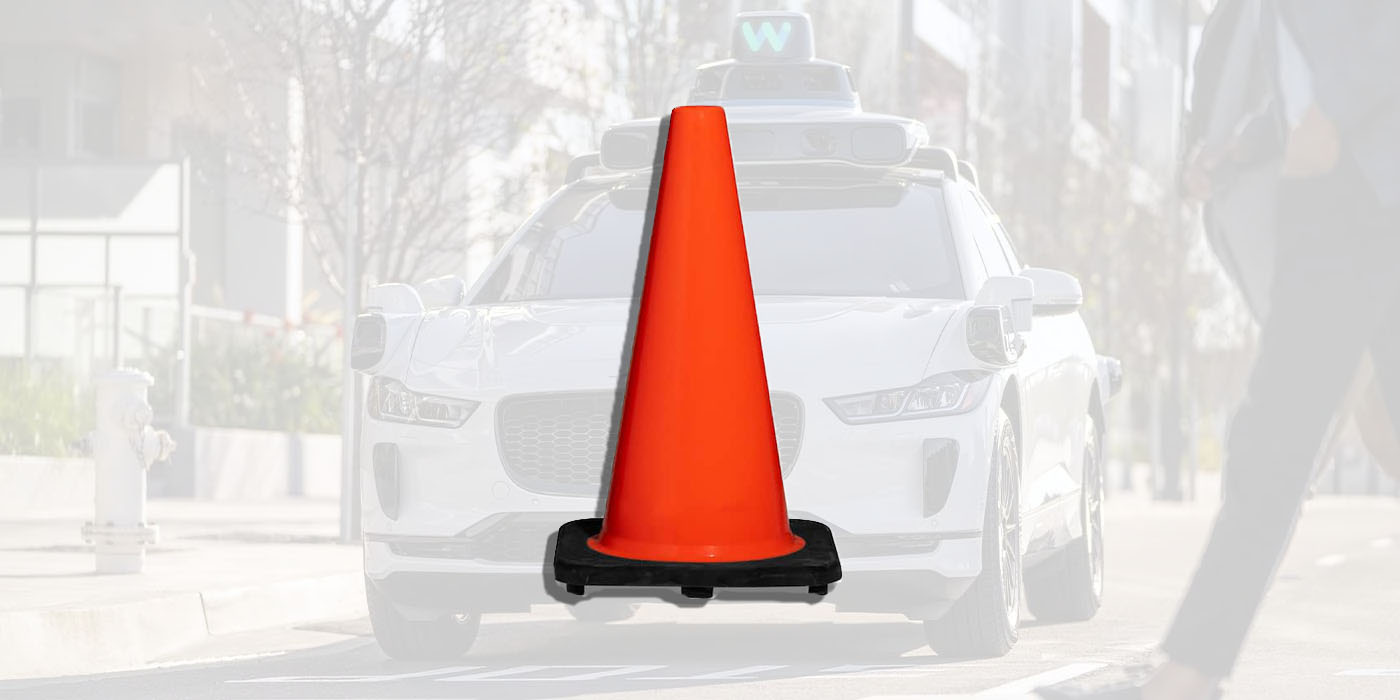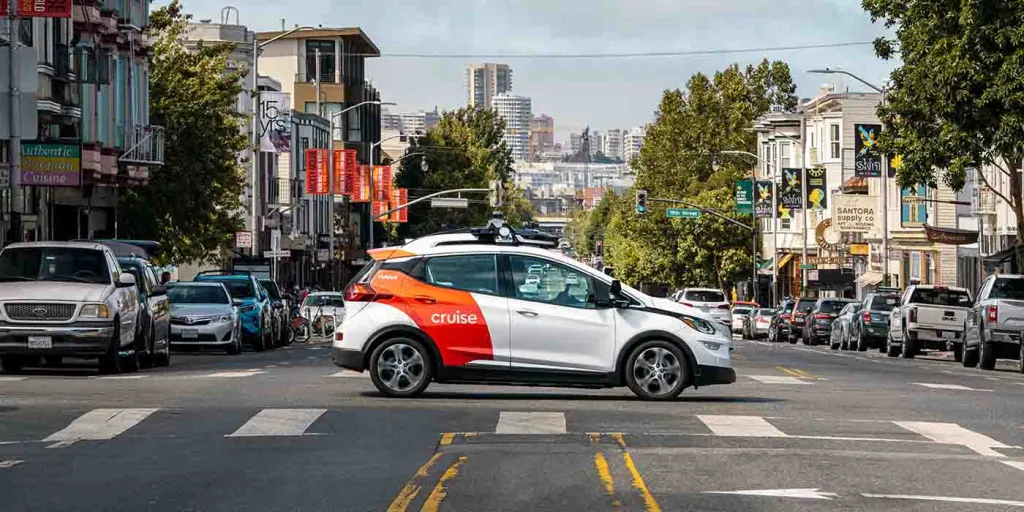
A select group of protestors in the San Francisco Bay area are demobilizing robotaxi EVs operated by companies like Waymo and Cruise by placing orange construction cones over their sensors. While opposition to this technology has been present in small doses for years, the resistance against autonomous vehicles has recently gotten more press following a recent vote to expand the services in California. Is this a fear of autonomy or just a fear of change in general?
Self-driving cars, currently present in today’s automotive landscape in several varying tiers of true autonomy, remain a polarizing form of technology for a multitude of reasons. The most often discussed is probably whether we can truly reach full autonomy to the point of humans not operating their vehicles at all anymore.
Some automakers like Tesla have been overpromising and underdelivering on this prospect for years, while others have adopted a less radical approach to driver assistance, settling for Level 2+ or even Level 3 autonomous driving, leaving the others to try and sort out Level 4 and perhaps, one day, Level 5.
One segment in electric mobility that has made the most headway in self-driving vehicles is the robotaxi – led by startups empowered by big innovation and even bigger investments from legacy automakers like GM and capital venture firms who see the potential in rideshares without human error.
While other cities like Phoenix, Las Vegas, and Austin start to lure startups away from Northern California, Silicon Valley remains a major hub for nascent technologies, including robotaxis. While companies like Motional, Cruise, Waymo, and Zoox have made commendable progress in the segment, not everyone around town is clapping.
In San Francisco, a group of robotaxi vigilantes believes the EVs do more harm to traffic conditions than good and have begun immobilizing the cars using traffic cones.

Safe Street Rebels choose the cone as a robotaxi weapon
This act of rideshare deterrence is being referred to as “coning” by a group of Bay Area NIMBYs (although I doubt too many people have a yard in SF), who refer to themselves as the “Safe Street Rebels.”
For the last month or so, the “Rebels” have been placing traffic cones atop robotaxis, rendering them stationary until the orange rubber is removed or the system is rebooted. One could argue that removing a cone from a construction zone or freezing a vehicle in the middle of the street could create more danger for others in traffic, but not according to the “Safe Street” posse.
Robotaxis donning these new debilitating cone crowns is the result of tantrums opposition to a recent vote of approval by the California Public Utilities Commission to expand commercial robotaxi rides throughout San Francisco, allowing startups like Waymo to begin charging passengers for rides.
The cone head protestors have been emboldened by the local transport agency, alongside some city and fire officials in San Francisco, who have said the robotaxis can interfere with emergency responders… just like human drivers, bicyclists, and the occasional pedestrian strolling around on their phone.
Although companies like Cruise and Waymo have not shared how many robotaxis have been coned since the August 10 approval vote, a representative for the former said the number of incidents has already significantly declined. Perhaps the Safe Street Rebels ran out of cones or, better yet, has begun refocusing its energy on helping the people of San Francisco who are actually living on the street and are so desperately in need of assistance and care.
Electrek’s Take
We cover robotaxis all the time, and this narrative never changes. There are hundreds of traffic incidents in a given city each day, brought on by human error, yet a driverless car makes one wrong turn or freezes up, and the technology is suddenly the real danger out there in the streets.
Change the record.
Obviously, this remains a new and emerging technology that will not come without its fair share of bugs, but the progress made to date has been staggering. I’m sure this group of self-proclaimed “rebels” is a very small sample of opposition compared to the general population that supports fewer cars on roads, less pollution, and less of a necessity to own a vehicle in a large city, but unfortunately, negative news like this often gets the spotlight.
I’m guilty as I write this, giving attention to a group that is, in my opinion, a nonstarter in the overall history of autonomous driving, but I feel it’s important to point out that this technology will continue to improve and expand. Whether you embrace safer and more efficient transportation or use paper-thin examples to hide the fact that you simply fear change is up to you.
FTC: We use income earning auto affiliate links. More.